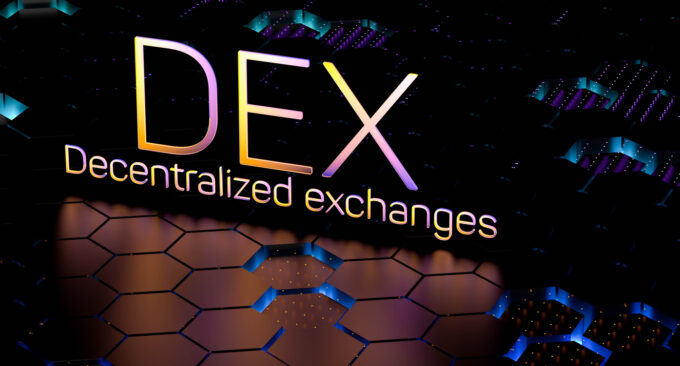Cryptocurrency, with its digital and decentralized nature, has become a pivotal element in the modern financial landscape. However, navigating the intricacies of buying and selling cryptocurrencies without incurring high fees remains a challenge for many. This article aims to provide comprehensive insights into how you can engage in cryptocurrency transactions efficiently while keeping costs at a minimum.
1. Understanding the Landscape of Fees in Cryptocurrency Transactions

In the realm of cryptocurrencies, fees are an essential component, serving as remuneration for the miners or validators who sustain the blockchain network’s functionality. These fees are not constant; they fluctuate based on various factors such as the specific network, the transaction’s size, and the overall congestion on the network at the time of the transaction.
A fundamental step in reducing transaction costs is gaining a thorough understanding of how these fees work. It involves recognizing that different cryptocurrencies and blockchain networks have distinct fee structures and mechanisms. For example, the fee for a Bitcoin transaction may differ significantly from that of an Ethereum transaction, primarily due to differences in their respective network architectures and transaction processing methods.2. Strategic Selection of Cryptocurrency Exchanges
One of the most crucial decisions in managing cryptocurrency transactions cost-effectively is choosing the right exchange. The market is flooded with a myriad of exchanges, each boasting its unique fee structures and benefits. To minimize fees, it is imperative to select exchanges that are not only user-friendly but also transparent about their fee policies.
Some exchanges offer competitive advantages such as reduced fees for larger trade volumes or incentives for using their native tokens to offset transaction fees. Additionally, the geographical location of an exchange can influence its fee structure due to regional regulations and operational costs. Check out more on exchanging bnb to usdt or any other cryptocurrency pairs.
3. The Role of Peer-to-Peer Transactions in Reducing Fees
Peer-to-peer (P2P) platforms present a potentially more economical avenue for trading cryptocurrencies. These platforms facilitate direct transactions between buyers and sellers, often allowing them to negotiate terms, including fees, more freely. While P2P platforms can be effective in reducing costs, they also demand a higher degree of vigilance against fraud and scams.
Ensuring the use of reputable P2P platforms and conducting thorough due diligence on potential trading partners are essential steps in leveraging the benefits of P2P transactions safely and effectively.
4. Navigating Order Types: Limit Orders Versus Market Orders

A deeper understanding of order types can significantly aid in managing transaction fees. Cryptocurrency exchanges typically offer various order types, with limit orders and market orders being the most common. A limit order allows you to set a specific price at which you are willing to buy or sell a cryptocurrency, potentially helping you avoid the higher fees that can accompany market orders, which execute a trade at the current market price.
However, it’s important to note that limit orders may not always be executed if the market does not reach your specified price. This aspect requires a careful balance between the desire to minimize fees and the need to successfully complete transactions within desired timeframes.
5. Off-Peak Trading to Capitalize on Lower Fees
Since cryptocurrency markets operate round the clock, the level of network activity and thus congestion varies throughout the day. Engaging in trading activities during off-peak hours can be a strategic move to reduce transaction costs. Lower network congestion during these times typically translates into lower fees. However, this approach requires an understanding of the global nature of cryptocurrency markets and the ability to track peak and off-peak times across different time zones.
6. Exploring Decentralized Exchanges for Lower Fees

Decentralized exchanges (DEXs) have emerged as an alternative to traditional centralized exchanges, often offering lower transaction fees. DEXs operate on blockchain technology, allowing users to execute trades directly from their wallets without the need for an intermediary.
This not only potentially reduces fees but also enhances the level of control and security for the users. However, trading on DEXs comes with its own set of challenges, including potentially lower liquidity and the need for a more in-depth understanding of blockchain and smart contracts.
7. Regular Monitoring and Adaptation to Changing Fee Structures
The dynamic nature of the cryptocurrency market means that fee structures are subject to change. Staying informed about these changes is crucial for anyone looking to optimize their trading costs. Regularly reviewing and comparing the fee structures of different platforms is advisable, along with being flexible and ready to adapt your trading strategies and platforms of choice as the market evolves.
8. Embracing Long-Term Holding Strategies
Another effective strategy to minimize transaction fees in the world of cryptocurrency involves adopting a long-term holding approach. This strategy is based on the premise that reducing the frequency of transactions inherently lowers the cumulative fees incurred over time. Long-term holding, often referred to as ‘HODLing’ in the crypto community, is not just about fee reduction but also about potential capital appreciation.
Cryptocurrencies, like any other asset, can appreciate in value over time. By holding your assets for a longer duration, you not only save on transaction fees but also potentially benefit from the appreciation of the asset’s value. However, this strategy is not without its risks, as the volatile nature of cryptocurrencies can lead to significant fluctuations in value.
9. Balancing Cost-Efficiency with Security and User Experience
Finally, while minimizing fees is a key objective, it’s important to balance cost-efficiency with security and user experience. Opting for the cheapest transaction routes without considering the security and reputation of the platform can lead to detrimental consequences, including the risk of fraud and loss of assets.
Security measures such as two-factor authentication, cold storage of assets, and using reputable and well-established exchanges should never be compromised for the sake of saving on fees. Additionally, the user experience, including the ease of navigating the platform and accessing customer support, plays a vital role in your overall crypto journey.
End Note
In summary, navigating the cryptocurrency market efficiently requires a multifaceted approach. Understanding and adapting to the fee structures, utilizing the right trading platforms, embracing long-term holding strategies, and not compromising on security and user experience are all key to successfully buying and selling cryptocurrencies without being burdened by high fees.











